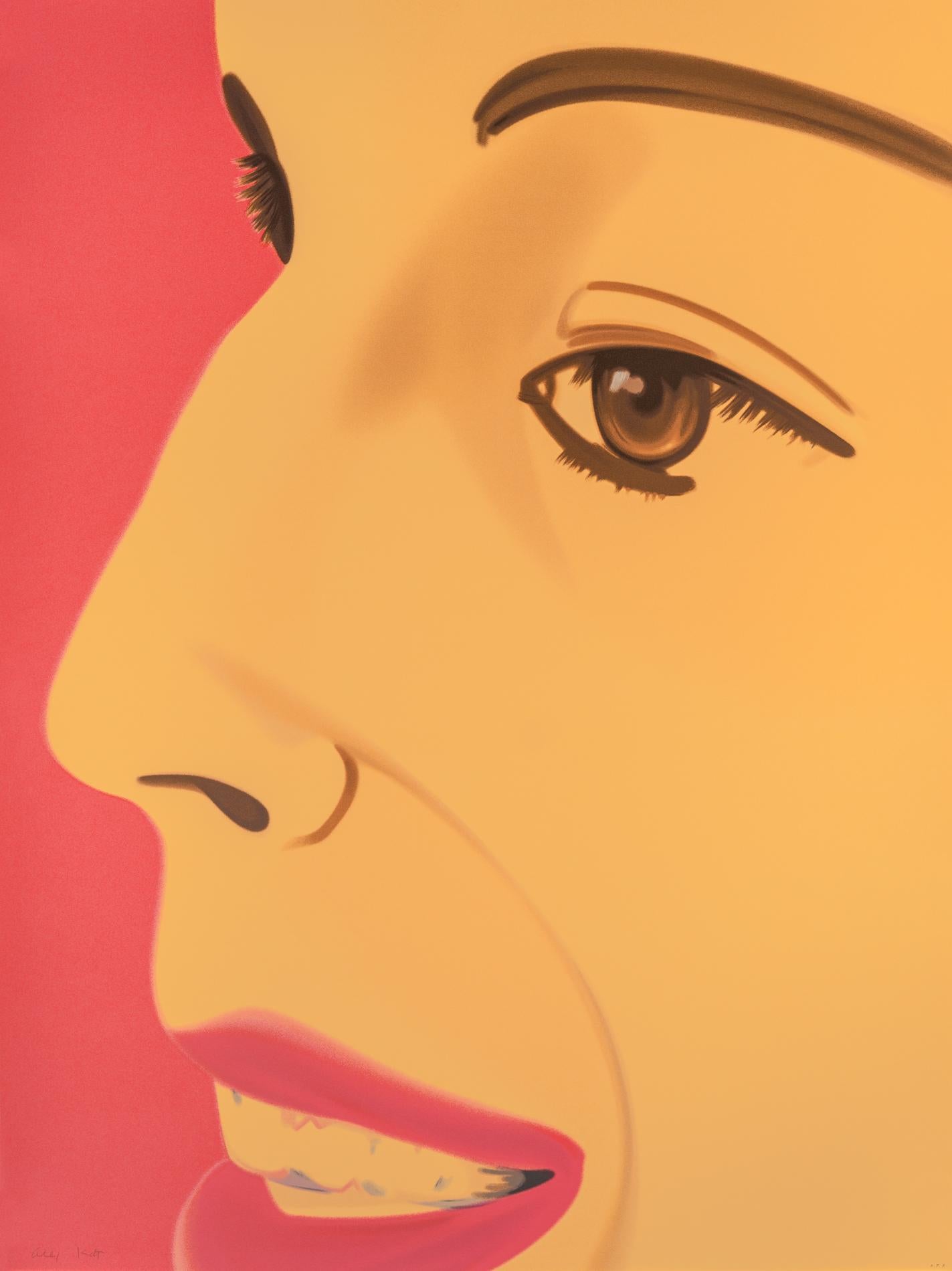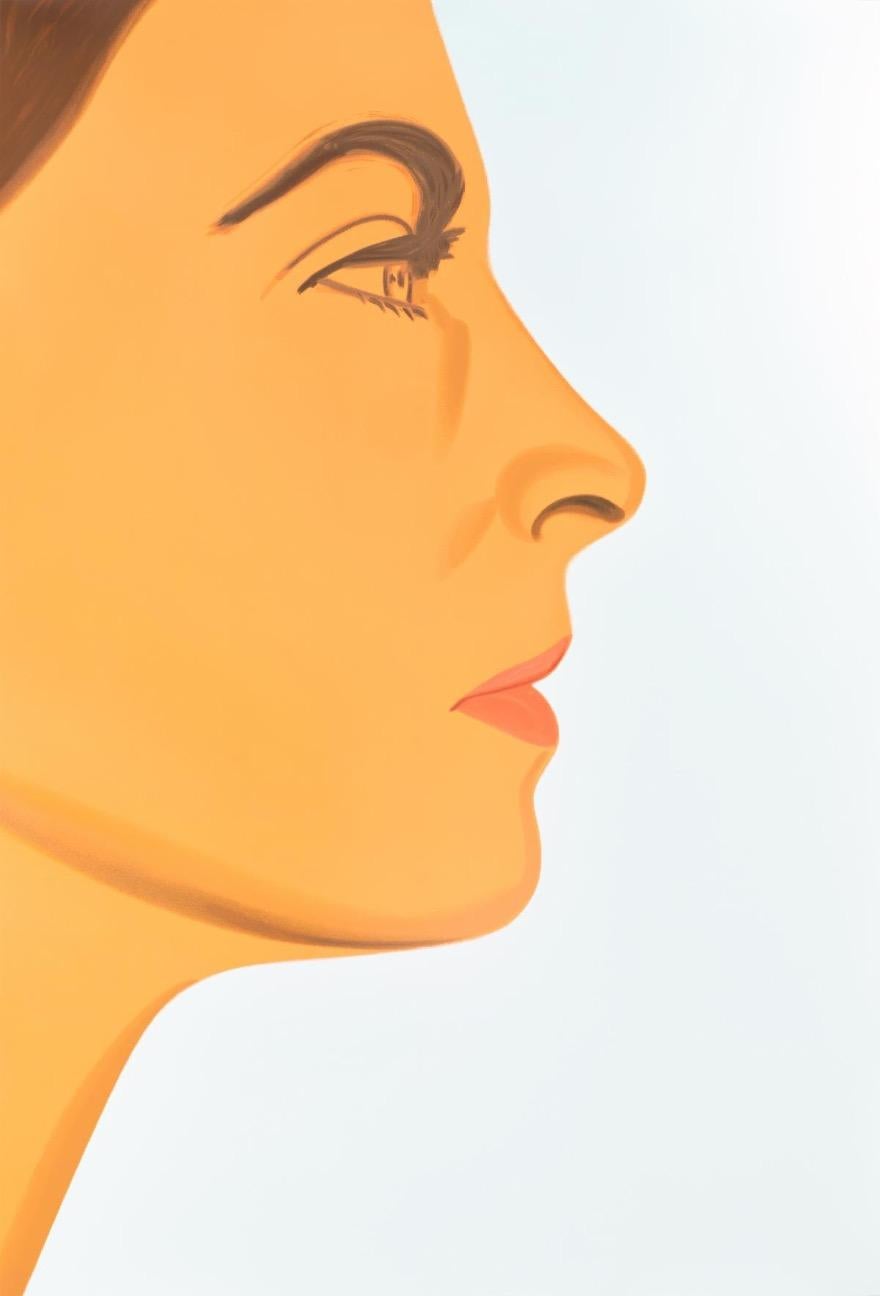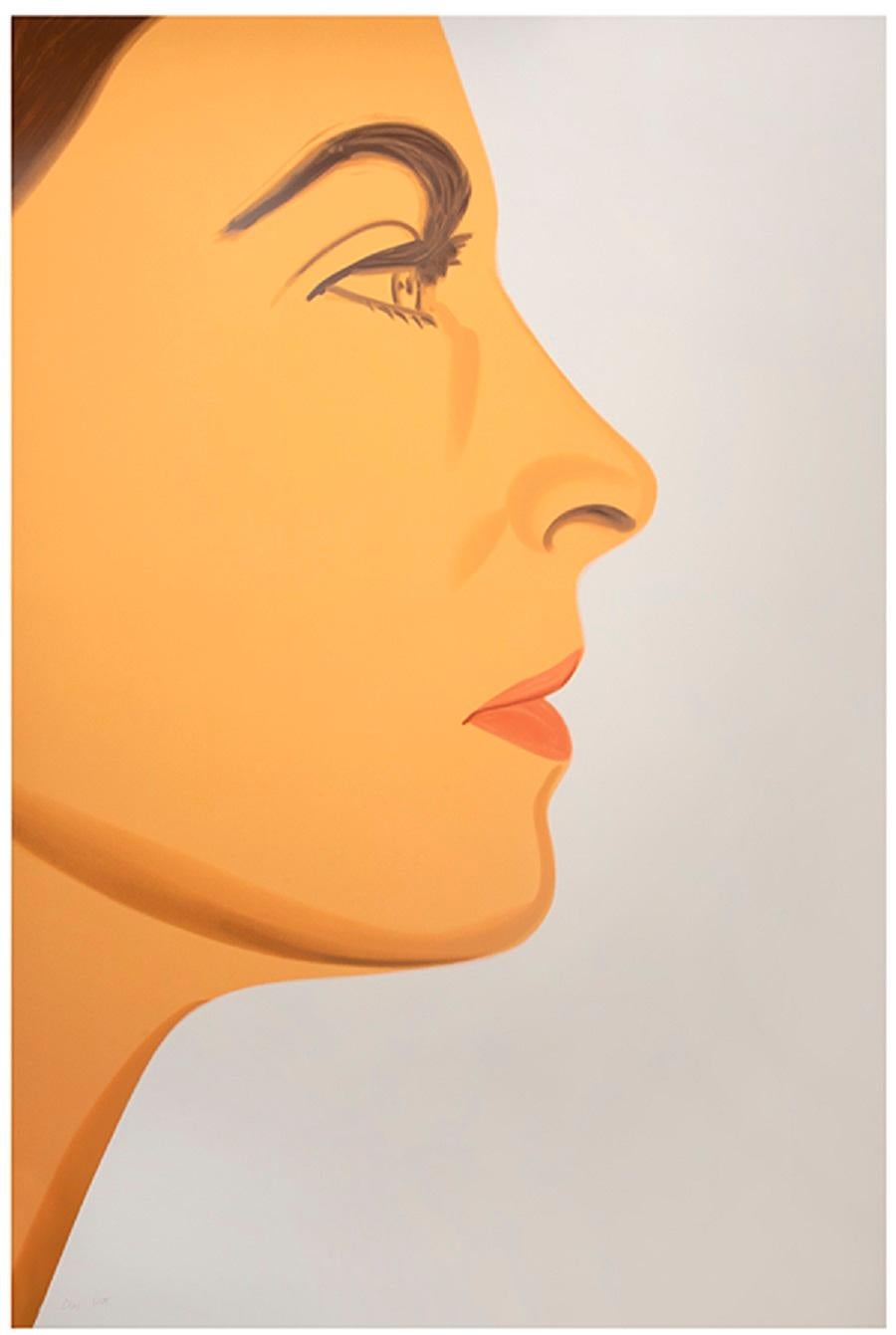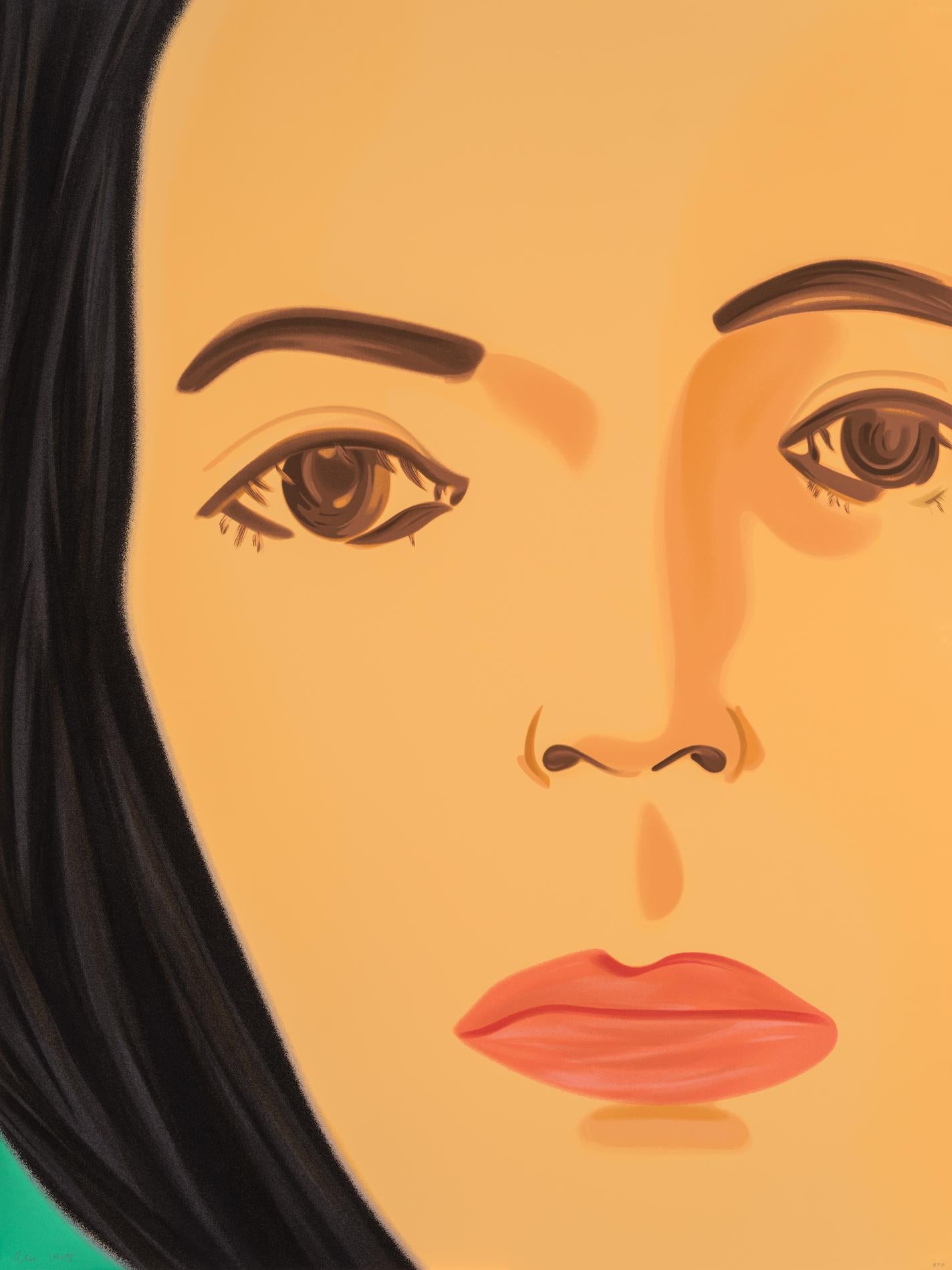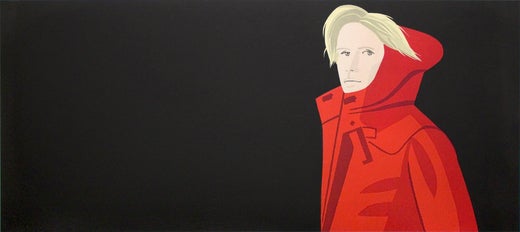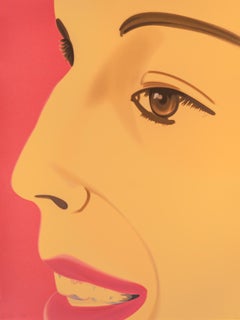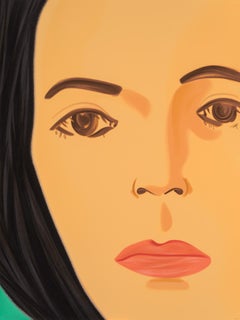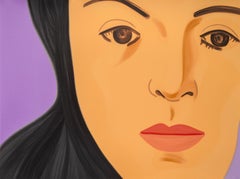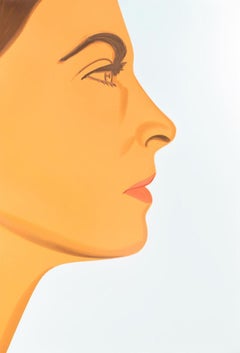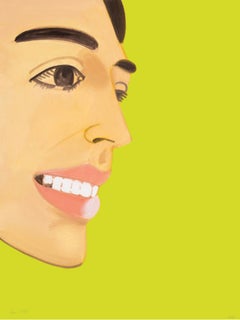Alex Katz was born in Brooklyn, New York in 1927. In 1928, at the outset of the Depression, his family moved to St. Albans, a diverse suburb of Queens that had sprung up between the two wars. Katz was raised in St. Albans by his Russian parents. His mother had been an actress and possessed a deep interest in poetry and his father, a businessman, also had an interest in the arts. Katz attended Woodrow Wilson High School for its unique program that allowed him to devote his mornings to academics and his afternoons to the arts. In 1946, Katz entered The Cooper Union Art School in Manhattan, a prestigious college of art, architecture, and engineering. At The Cooper Union, Katz studied painting under Morris Kantor and was trained in Modern art theories and techniques. Upon graduating in 1949, Katz was awarded a scholarship for summer study at the Skowhegan School for Painting and Sculpture in Maine, a grant that he would renew the following summer.
During his years at Cooper Union, Katz had been exposed primarily to modern art and was taught to paint from drawings. Skowhegan exposed him to painting from life, which would prove pivotal in his development as a painter and remains a staple of his practices today. Katz explains that Skowhegan’s plein air painting gave him “a reason to devote my life to painting.” Katz’s first one-person show was held at the Roko Gallery in 1954. Katz had begun to develop greater acquaintances with the New York School and their allies in the other arts; he counted amongst his friends’ figurative painters Larry Rivers and Fairfield Porter, photographer Rudolph Burckhardt, and poets John Ashbery, Edwin Denby, Frank O’Hara, and James Schuyler. From 1955 to 1959, usually following a day of painting, Katz made small collages of figures in landscapes from hand-colored strips of delicately cut paper.
In the late 1950s, he moved towards greater realism in his paintings. Katz became increasingly interested in portraiture, and painted his friends and his wife and muse, Ada. He embraced monochrome backgrounds, which would become a defining characteristic of his style, anticipating Pop Art and separating him from gestural figure painters and the New Perceptual Realism. In 1959, Katz made his first cutout, which would grow into a series of flat “sculptures;” freestanding or relief portraits that exist in actual space.
In the early 1960s, influenced by films, television, and billboard advertising, Katz began painting large-scale paintings, often with dramatically cropped faces. In 1965, he also embarked on a prolific career in printmaking. Katz would go on to produce many editions in lithography, etching, silkscreen, woodcut and linoleum cut. After 1964, Katz increasingly portrayed groups of figures.
He would continue painting these complex groups into the 1970s, portraying the social world of painters, poets, critics, and other colleagues that surrounded him. He began designing sets and costumes for choreographer Paul Taylor in the early 1960s, and he has painted many images of dancers throughout the years. In the 1980s, Katz took on a new subject in his work: fashion models in designer clothing. In the late 1980s and 1990s, Katz focused much of his attention on large landscape paintings, which he characterizes as “environmental.” Rather than observing a scene from afar, the viewer feels enveloped by nearby nature. Katz began each of these canvases with “an idea of the landscape, a conception,” trying to find the image in nature afterwards. In his landscape paintings, Katz loosened the edges of the forms, executing the works with greater painterliness than before in these allover canvases. In 1986, Katz began painting a series of night pictures—a sharp departure from the sunlit landscapes he had previously painted, forcing him to explore a new type of light. Variations on the theme of light falling through branches appear in Katz’s work throughout the 1990s and into the 21st century.
At the beginning of the new millennium, Katz also began painting flowers in profusion, covering canvases in blossoms similar to those he had first explored in the late 1960s, when he painted large close-ups of flowers in solitude or in small clusters. More recently Katz began painting a series of dancers and one of nudes, which was the subject of a 2011 exhibition at the Kestnergesellschaft in Hanover. Katz’s work continues to grow and evolve today. Alex Katz's work has been the subject of more than 200 solo exhibitions and nearly 500 group exhibitions internationally since 1951. In 2010, Alex Katz Prints was on view at the Albertina Museum in Vienna, which showed a retrospective survey of over 150 graphic works from a recent donation to the museum by Katz of his complete graphic oeuvre. The National Portrait Gallery in London presented an exhibition titled Alex Katz Portraits.
In June 2010, The Farnsworth Art Museum in Rockland, Maine opened Alex Katz: New Work, exhibiting recent large-scale paintings inspired by his summers spent in Maine. Katz was also represented in a show at the Metropolitan Museum of Art, New York, curated by Marla Prather, entitled Facing the Figure: Selections from the Permanent Collection, 2010. In 2009-2010, Alex Katz: An American Way Of Seeing was on view at the Sara Hildén Art Museum, Tampere, Finland; Musée Grenoble, Grenoble, France; and the Museum Kurhaus Kleve, Kleve, Germany. In 2007, Alex Katz: New York opened at the Irish Museum of Modern Art, Dublin, Ireland. The show, which included approximately 40 paintings and aquatints, was the first exhibition to concentrate primarily on Katz’s relationship with his native city.
The Jewish Museum, New York, presented Alex Katz Paints Ada in 2006-2007, an exhibition of 40 paintings focused on Katz’s wife, Ada, dating from 1957 to 2005. It coincided with an exhibition devoted to Katz’s paintings of the 1960s at PaceWildenstein, Alex Katz: The Sixties, on view from April 27 through June 17, 2006 at 545 West 22nd Street. Alex Katz in Maine, an exhibition of landscapes and portraits made over six decades, opened at The Farnsworth Art Museum and Wyeth Center, Rockland, Maine in 2005, and then travelled to the Pennsylvania Academy of Fine Arts, Philadelphia in 2006. In 2005 Colby College Museum of Art organized a survey of more than 70 of Katz’s early collages and the Centro de Arte Contemporáneo de Málaga, Spain, exhibited recent paintings. In the summer of 2003, the first European exhibition devoted solely to the artist's celebrated portraits opened at the Fondazione Bevilacqua La Masa in Venice.
An exhibition of the artist's aluminum cutouts opened at the Deichtorhallen Hamburg in 2003 and traveled to the Museum Moderner Kunst Kaernten, Klagenfurt, Austria. Major exhibitions of Katz's landscape and portrait painting in America and Europe followed his 1986 Whitney Museum of American Art retrospective and 1988 print retrospective at the Brooklyn Museum of Art. These exhibitions include: Staatliche Kunsthalle, Baden-Baden (1995), Instituto Valenciano de Arte Moderno, Valencia (1996), P.S. 1/Institute for Contemporary Art, New York (1997-1998), the Saatchi Gallery, London (1998), Galleria Civica di Arte Contemporanea, Trento (1999), and Kunst und Ausstellungshalle der Bundesrepublik Deutschland, Bonn (2002). A retrospective of Katz’s print work was held at the Albertina museum in Vienna in 2010 and will open at at the Museum of Fine Arts, Boston, in April of 2012. The Paul J. Schupf Wing for the Works of Alex Katz, which opened in 1996, presents ongoing exhibitions of its in-depth collection of Katz’s paintings, cutouts, drawings, and prints, made possible through the generosity of then Colby trustee Paul J. Schupf and the personal donations of works by Katz himself. The Schupf Wing is one of the few wings of a museum in the United States devoted solely to the work of a single living artist. Katz has received numerous accolades throughout his career. In 2007, he was honored with a Lifetime Achievement Award from the National Academy Museum, New York. In 2005, Katz was the honored artist at the Chicago Humanities Festival’s Inaugural Richard Gray Annual Visual Arts Series.
The same year, he was awarded an Honorary Doctorate of Fine Arts from Colgate University, Hamilton, New York— his second Honorary Doctorate, following one from Colby College, Maine, in 1984. Katz was named the Philip Morris Distinguished Artist at the American Academy in Berlin in 2001 and received the Cooper Union Annual Artist of the City Award in 2000. In addition to this honor from Cooper Union, in 1994, his alma mater created the Alex Katz Visiting Chair in Painting with the endowment provided by the sale of ten paintings donated by the artist. Katz was inducted by the American Academy and Institute of Arts and Letters in 1988.
In 1987 he was the recipient of the Pratt Institute’s Mary Buckley Award for achievement and also received the Queens Museum of Art Award for Lifetime Achievement. The Chicago Bar Association honored Katz with the Award for Art in Public Places in 1985.
In 1978, Katz received the U.S. Government grant to participate in an educational and cultural exchange with the USSR. Katz was awarded the John Simon Guggenheim Memorial Fellowship for Painting in 1972.
Works by Alex Katz can be found in over 100 public collections worldwide. Most notably, those in America include: Albright-Knox Museum, Buffalo; The Art Institute of Chicago; The Brooklyn Museum; Carnegie Museum of Art, Pittsburgh; Des Moines Art Center; Hirshhorn Museum and Sculpture Garden at the Smithsonian Institution, Washington, D.C.; The Los Angeles County Museum of Art; The Metropolitan Museum of Art, New York; Milwaukee Art Museum; The Museum of Fine Arts, Boston; The Museum of Modern Art, New York; The National Gallery of Art, Washington, D.C.; National Museum of American Art, Smithsonian Institute, Washington, D.C.; National Portrait Gallery, Smithsonian Institution, Washington, D.C.; Philadelphia Museum of Art; the Wadsworth Athenaeum, Hartford; and The Whitney Museum of American Art, New York. Additionally, Katz’s work can be found in the Albertine Graphische Sammelung (Austria), the Atenium Taidemuso (Finland), the Sara Hildén Art Museum (Finland), the Bayerische Museum (Germany), the Berardo Collection (Portugal), the Essl Collection (Austria), the French National Collection, the Israel Museum, IVAM Centre Julio Gonzalez (Spain), the Metropolitan Museum of Art (Japan), Museum Moderne Kunst (Austria), the Museo Nacional Centro de Arte Reina Sofia (Spain), the Nationalgalerie (Germany), the Saatchi Collection (England), and the Tate Gallery (England), among others. In 1968, Katz moved to an artists’ cooperative building in SoHo, where he has lived and worked ever since. He continues to spend his summers in Lincolnville, Maine.


